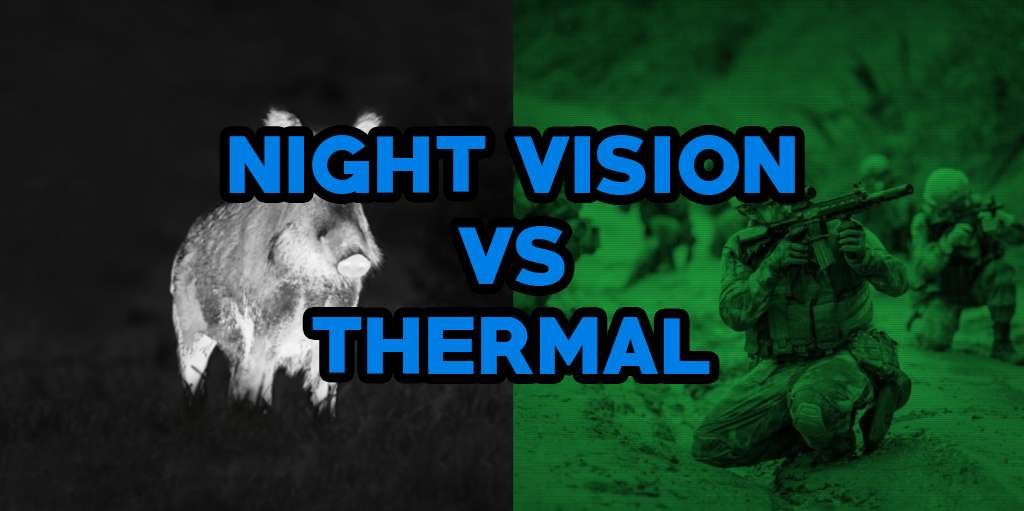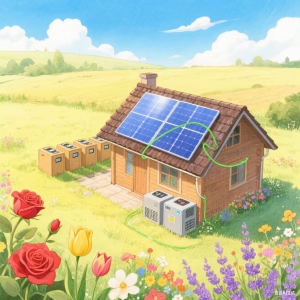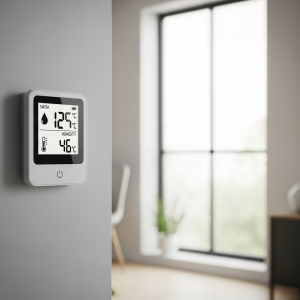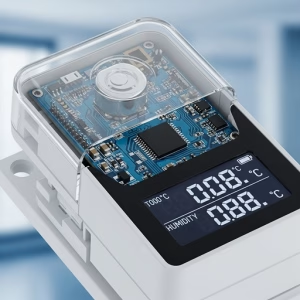Objects can be captured in low light by night vision cameras and in darkness by thermal cameras. The principles they work on and the purposes they serve are different. We will compare these two types of cameras in this article. The purpose of our comparison is to help you choose which product best suits your needs by taking into account a variety of aspects and applications.

What is Night Vision?
Natural adaptations or technology can help a person see in low-light conditions, as in night vision. Humans typically use specialized devices to perform night vision, such as night vision goggles or cameras that simulate visible light by amplifying available light or using infrared light. Infrared light is detected when it bounces off objects in the dark and is collected and intensified through devices like these. Wildlife observation, military operations, security surveillance, and outdoor activities are all common uses for night vision technology.
What Is Night Thermal?
In night thermal imaging, heat is visualized without regard to lighting conditions by analyzing the heat emitted by objects and living beings. Infrared radiation, which is emitted by all objects above absolute zero, is detected by thermal imaging, not night vision, which amplifies available light. These infrared images are converted into visible images by thermal cameras, where different temperatures are represented by varying shades of gray or colors. Various barriers, smoke, and fog can be seen through it. Firefighting, security, and surveillance, as well as searching and rescuing are some areas where thermal technology is utilized extensively.
Night Vision vs. Thermal: What’s the Difference?
It is possible to enhance visibility with night vision and thermal imaging in low and no light conditions, respectively. While they both serve the same purpose, their operating principles and application capabilities are different. Comparing the two is as follows:
Technology and Mechanism
In order to achieve night vision, image intensifier tubes are used to collect and enhance ambient light such as moonlight, starlight, or artificial lighting. Human vision is allowed to perceive the scene through this process, creating a green-colored image. In complete darkness, night vision is less useful since it requires a certain amount of light to function effectively. In certain conditions, its performance can also be hindered by smoke, fog, or other obstructions that can obscure its vision.
In contrast, thermal imaging generates images by converting infrared radiation (heat) emitted by objects into visible light. Thermal cameras are capable of detecting these heat signatures regardless of the lighting conditions since everything above absolute zero emits infrared radiation. Unlike traditional technologies, this technology doesn’t require any light in order to operate. As a result, thermal imaging provides unique visibility advantages that night vision cannot, such as seeing through smoke and fog.
Image Characteristics
Since night vision devices are dependent on ambient light, their images are usually monochromatic and green-tinted. It may be possible to have different image quality depending on how much light is present, with light pollution and reflection potentially affecting performance. As a result of night vision, faces can be recognized, signs can be read, and objects can be identified in low light.
By contrast, thermal imaging enables images to appear in grayscale and false color in response to temperature contrast. While they do not provide as much fine detail as night vision images, heat sources are easily highlighted by these images. Two of the applications of thermal imaging include detecting heat signatures and distinguishing objects from foliage or smoke. It is especially useful for identifying objects or people through smoke and foliage, although it isn’t as good for detailed object recognition.
Applications
Reconnaissance, navigation, and target identification in low-light environments are commonly done with night vision in military and law enforcement. Hunting and wildlife enthusiasts enjoy it as well because it allows them to observe animals at night in their natural habitats. Security cameras and surveillance systems also employ night vision technologies to enhance monitoring at night.
People can be located in complete darkness, through smoke, or on challenging terrain using thermal imaging during search and rescue operations. Thermal imaging is used by firefighters to detect hot spots in burning buildings. Security and surveillance use thermal imaging to detect intruders and unauthorized activity by studying their heat signatures. The use of thermal imaging in industrial inspections also provides valuable insights into maintenance and safety because it can detect overheating components and insulation failures.
Limitations and Considerations
In pitch-black conditions, night vision technology is limited by an reliance on ambient light. Additionally, suddenly exposing a night vision device to bright light may cause damage or even result in temporary blindness.
The complex sensors involved in thermal imaging make the technology more expensive than night vision, despite its effectiveness. Moreover, thermal images cannot be used for tasks such as face recognition or text reading as precise as night vision technology. In spite of its limitations, thermal imaging is often preferable because it can detect heat signatures and work in all lighting conditions.
Final Verdict
Understanding the distinct advantages and limitations of thermal imaging and night vision is essential when choosing one over the other. Low-light conditions are ideal for using night vision, which is particularly effective for detecting details in low-light scenes. It’s ideal for applications such as military operations, law enforcement, and certain types of surveillance where facial recognition, reading text, or identifying specific objects are needed. As a result, it is less effective when there is no light or when there are visual obstructions such as smoke or fog.
Detecting heat signatures is paramount when thermal imaging is used. Among its many uses are search and rescue missions, firefighting, and industrial inspections due to its ability to operate in complete darkness and penetrate smoke, fog, and other barriers. Night vision may offer finer detail than thermal images, but the versatility of the technology and its ability to highlight heat sources give thermal imaging unique advantages.
The specific requirements of the task at hand should drive the choice between night vision and thermal imaging. It is better to use night vision in low-light environments if you need to perform detailed visual tasks. Detecting heat sources and operating in challenging conditions is made easier by the thermal imaging technique. Users can improve their visibility and effectiveness in various applications by carefully considering the strengths and limitations of each technology.





3 Responses
Hey people!!!!!
Good mood and good luck to everyone!!!!!
Hello, everyone! Feel free to comment on our blog posts!
Thank you for your comments and support!